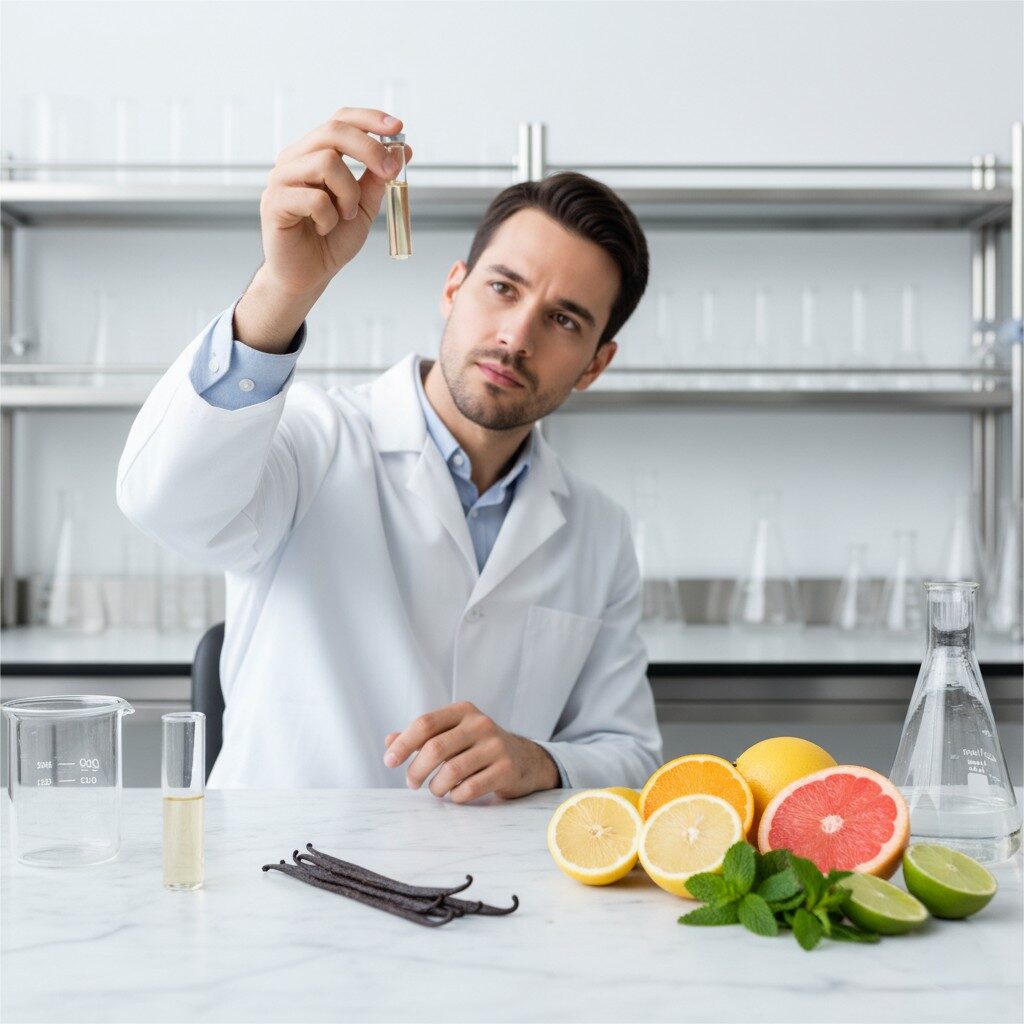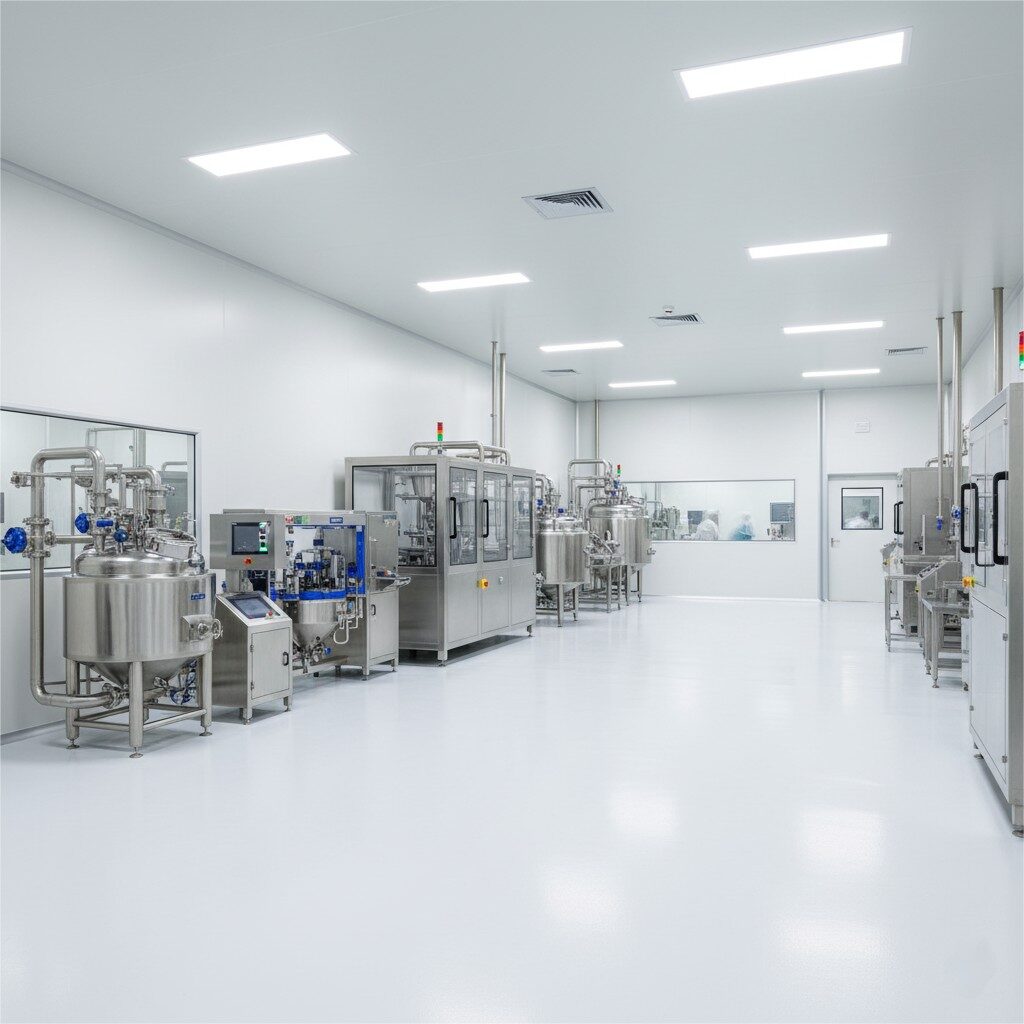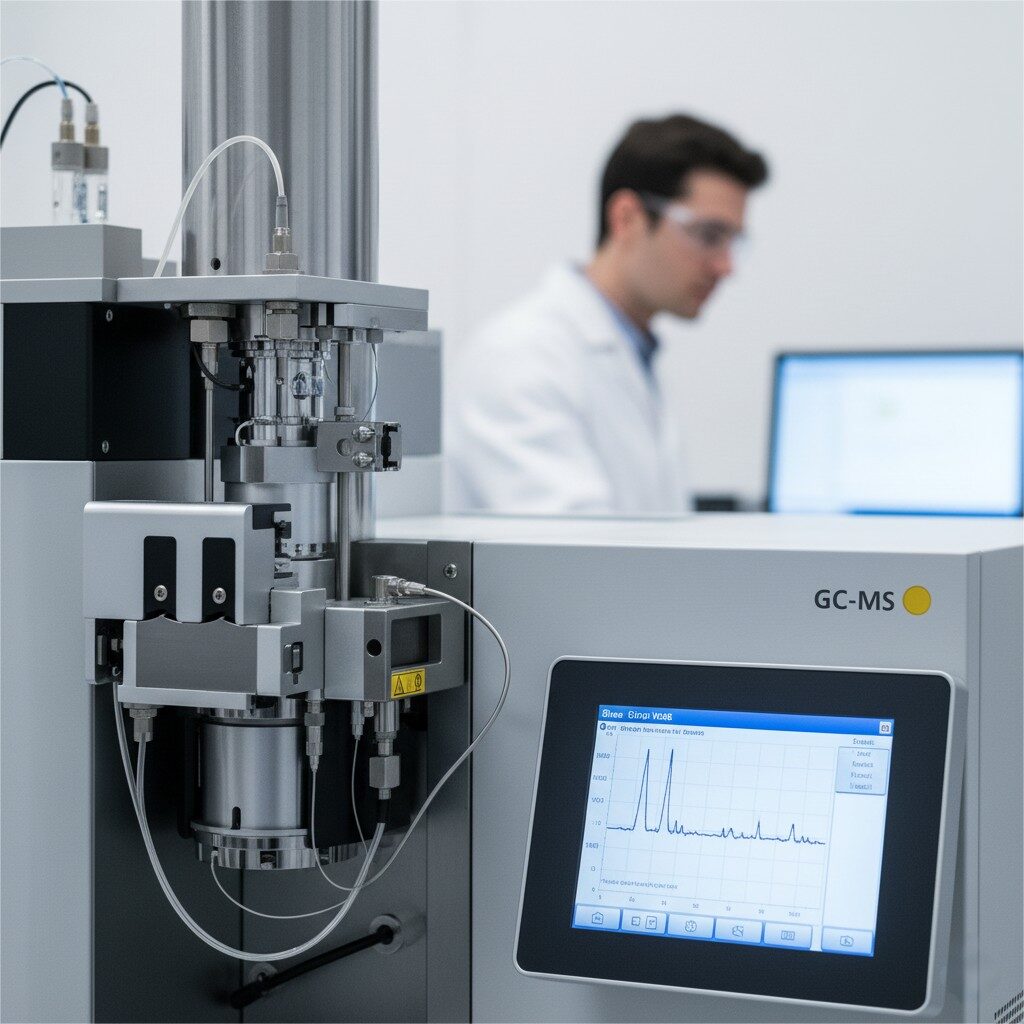Author: R&D Team, CUIGUAI Flavoring
Published by: Guangdong Unique Flavor Co., Ltd.
Last Updated: Sep 23, 2025
Flavors are the very soul of food and beverage products, transcending a simple taste to evoke memory, emotion, and loyalty. They are the defining characteristic of a consumer’s experience, providing the perfume of a rose in a confection or the tang of a green apple in a soda. Yet, this intricate art of flavor creation is built upon a foundation of science and an unwavering commitment to safety and purity that remains largely unseen by the end consumer.
The unseen imperative in flavor manufacturing is this: consumer trust is not a given; it is earned through a rigorous, multi-layered quality assurance process. This process is not a mere department or a final checklist; it is a foundational philosophy that permeates every stage of the production lifecycle. It is a comprehensive system that encompasses strict regulatory adherence, operational excellence, scientific rigor, and end-to-end transparency. This report will detail how leading flavor manufacturers deliver on this promise, revealing the intricate systems that ensure every drop of flavor is of the highest quality and safety.

The Art and Science of Flavor
The first and most critical layer of quality assurance is strict adherence to the complex tapestry of international and national food safety regulations. These frameworks are not merely a set of hurdles to be overcome; they represent a shared, industry-wide commitment to protecting public health.
In the United States, the use of flavorings is meticulously regulated by the U.S. Food and Drug Administration (FDA) through the Code of Federal Regulations (CFR) Title 21, Part 101.22. This regulation mandates that all flavorings used in food products must be safe for consumption and accurately labeled. A flavoring is defined as “any substance, the function of which is to impart flavor, which is used or intended for use in imparting flavor to a food”.
A cornerstone of the FDA’s regulatory system is the concept of “Generally Recognized as Safe” (GRAS) substances. The GRAS status provides an exemption from the pre-market approval required for food additives. A substance is considered GRAS if it is widely recognized as safe for its intended use, typically based on a history of common use in food or through a robust scientific consensus. For a flavor that is not GRAS, a manufacturer must submit a food additive petition to the FDA for a comprehensive review and formal approval before it can be used in food products. This dual system ensures a clear, structured pathway for the introduction of all flavor ingredients into the food supply.
The GRAS system, however, is not without its complexities. While the FDA has several programs to oversee food ingredients, including a voluntary notification system where companies can submit their GRAS determinations for review, the process allows for a “self-declaration” of GRAS status. This means that a substance can enter the food supply as GRAS without ever being formally reviewed by the FDA, a practice that has drawn criticism and attention from consumer advocacy groups and legislators. For a flavor manufacturer, merely relying on a self-declared GRAS status is insufficient. A truly committed enterprise goes beyond the minimum legal requirement by transparently participating in the FDA’s voluntary notification process, ensuring their safety determinations are available for public scrutiny and agency review. This proactive step demonstrates a level of confidence and commitment to public safety that extends far beyond the regulatory baseline.
The U.S. regulatory framework is further strengthened by a unique collaboration with an influential industry body.
Across the Atlantic, the European Food Safety Authority (EFSA) provides the scientific foundation for the authorization of food flavorings within the European Union. EFSA’s expert Panel on Food Additives and Flavourings (FAF) is tasked with conducting rigorous risk assessments to determine whether a flavor poses any risk to consumers under its proposed conditions of use.
The assessment process is highly detailed and data-intensive. Applicants are required to submit extensive data on a flavor’s chemical properties, potential toxicity, metabolism, and estimated dietary exposure. A new guidance document, effective in December 2022, specifies a four-step risk assessment process that includes hazard identification, hazard characterization, exposure assessment, and risk characterization. This comprehensive approach ensures that every new substance is evaluated from multiple scientific perspectives, guaranteeing its safety before it can be listed in the EU’s Annex I of Regulation (EC) No 1334/2008, which specifies its permitted use and conditions.
Beyond government agencies, the Flavor and Extract Manufacturers Association (FEMA) plays a pivotal role in shaping the safety landscape of the flavor industry. Founded in 1909, FEMA is the national association of the U.S. flavor industry, comprising a diverse membership of flavor ingredient suppliers, manufacturers, and users. Its core mission is to promote the safe use of flavors through a “sound scientific program”.
FEMA’s influence is substantial. Its panel of scientific experts independently advises on matters of ingredient safety and has determined over 2,000 materials to be GRAS, a determination that the FDA recognizes and incorporates into its own databases. This relationship demonstrates a collaborative, science-driven approach to flavor safety. By aligning with FEMA, a flavor company is not just meeting regulations but is actively contributing to the scientific foundation of the entire industry. This engagement with a respected, independent body further builds a case for a company’s trustworthiness and its commitment to public health that goes beyond mere compliance.
While strict regulatory compliance is a non-negotiable baseline, true quality is built on a foundation of operational excellence. This is where international standards and foundational practices come into play, providing a structured framework for consistent production and a culture of continuous improvement.
Good Manufacturing Practices (GMP) serve as a fundamental framework for overseeing the safety, quality, and uniformity of products across various industries, particularly within the food and beverage sector. The core objective of GMP is to ensure that food products are consistently produced and controlled to the highest standards of quality, helping to prevent contamination, spoilage, and errors.
GMP compliance covers a wide range of procedures, starting with the physical environment. A GMP-compliant facility ensures that walls are sealed at floor junctures to prevent dust accumulation, that windows are in good repair, and that all systems are designed to prevent product contamination from condensation, mold, or insects. The surrounding premises are also managed, with proper drainage, pest control, and the orderly storage of equipment and waste. Furthermore, GMP dictates strict protocols for employee hygiene, including proper handwashing, wearing clean clothes, and using gloves, as well as clear documentation and production controls to guarantee consistency and enhance traceability in case a recall is necessary. This attention to every minute detail of the production environment is a clear indicator of a company’s deep commitment to purity.
A truly elite flavor manufacturer does not simply meet a single set of standards; it integrates multiple, complementary frameworks to achieve a holistic and robust management system. This is best exemplified by the strategic implementation of both ISO and FSSC certifications.
ISO 9001: This is a universal quality management system (QMS) standard that applies across all industries, regardless of size or sector. Its primary focus is on ensuring consistent product and service quality to enhance customer satisfaction. The standard is based on a Plan-Do-Check-Act (PDCA) cycle and includes principles such as a strong customer focus, leadership, and risk-based thinking.
FSSC 22000: In contrast, FSSC 22000 is a food safety certification scheme specifically designed for the food and beverage industry. Its primary objective is to ensure food safety compliance throughout the supply chain and to prevent food contamination and illnesses. This standard incorporates the ISO 22000 food safety management system, requires a thorough Hazard Analysis and Critical Control Points (HACCP) plan, and includes sector-specific prerequisite programs (PRPs).
An integrated approach to these two standards represents a powerful differentiator. While FSSC 22000 provides the “what” of food safety—the specific, mandatory practices for hazard control and compliance—ISO 9001 provides the “how” of robust quality management. The principles of continuous improvement and risk-based thinking from ISO 9001 enhance the food safety requirements of FSSC 22000, creating a synergistic system that ensures not just safe products, but consistently high-quality, customer-focused, and operationally excellent products. This integrated approach is a clear signal to partners that a company’s commitment to quality is both comprehensive and deeply embedded in its operational DNA.
| Characteristic | ISO 9001 | FSSC 22000 |
| Primary Focus | General Quality Management | Food Safety Management |
| Industry Scope | All industries | Food & Beverage industry |
| Key Components | PDCA Cycle, Customer Focus, Risk-Based Thinking, Continuous Improvement | HACCP, Prerequisite Programs (PRPs), ISO 22000 |
| Main Objective | Enhance customer satisfaction | Prevent food contamination and illness |

State-of-the-Art Flavor Production
Product quality does not begin in the laboratory or on the factory floor; it begins at the source. The first line of defense in quality assurance is the strategic and meticulous sourcing of raw materials. This process goes far beyond simple cost analysis; it is a long-term approach based on quality, reliability, and ethical alignment with suppliers.
Ensuring the integrity of raw materials requires a rigorous, multi-tiered supplier validation process. A leading flavor manufacturer does not simply trust a supplier’s word; it undertakes a comprehensive evaluation to verify every claim. This process typically includes:
says they do to a hands-on verification of what they actually do, providing an unparalleled level of confidence in the integrity of the supply chain.
Strategic sourcing also incorporates a robust risk management component. By diversifying the supplier base, a company can mitigate risks associated with supply chain disruptions, such as shortages or price volatility, ensuring continuity of production. Leveraging technology, such as procurement software, further enhances this process by automating ordering, tracking inventory levels, and analyzing supplier performance against key metrics like on-time delivery and product quality. This proactive approach builds a resilient supply chain that can withstand unforeseen challenges and a more stable partnership with customers.
The in-house quality control laboratory acts as the scientific sentinel of a flavor manufacturing operation. It is a fortress where every compound is meticulously scrutinized to ensure its purity, identity, and safety. A commitment to quality is measured by the investment in advanced analytical equipment capable of detecting impurities at the most minute concentrations.
Gas Chromatography-Mass Spectrometry (GC-MS) is an indispensable analytical technique for flavor analysis. It is a dual-function system where Gas Chromatography (GC) first separates a complex mixture of volatile compounds based on their varying volatilities. The compounds are vaporized and passed through a chromatographic column, where they are separated and eluted at different times. Following this separation, the Mass Spectrometry (MS) component precisely identifies and quantifies each compound by measuring its unique mass-to-charge ratio.
GC-MS has a wide range of critical applications in the flavor industry:
The ability of GC-MS to detect compounds at parts per billion concentrations is not just a technical feature; it is a critical necessity. The human nose is an incredibly sensitive instrument, capable of detecting some potent aroma compounds at concentrations as low as a few parts per trillion. To guarantee consistency and safety, a flavor company’s analytical system must be capable of detecting what the human palate can perceive, and often even beyond it. This powerful causal relationship—that human sensory perception at trace levels necessitates advanced, highly sensitive analytical equipment—underscores the need for a scientific approach that is both thorough and precise.
As a complementary technology to GC-MS, High-Performance Liquid Chromatography (HPLC) is essential for the analysis of non-volatile compounds that do not easily vaporize and cannot be analyzed by GC. HPLC separates a liquid sample into its components by forcing it through a column with a liquid mobile phase.
In food and flavor analysis, HPLC is used to test for a variety of non-volatile compounds and quality markers, including organic acids, sugars, flavonoids, and other compounds that affect flavor but are not aromatic. This is crucial for verifying the authenticity and nutritional profile of natural extracts and raw materials. For example, HPLC can be used to analyze the sugar composition of honey or to quantify the presence of flavonoids in a botanical extract.
The fact that both GC-MS and HPLC are required for a complete analytical profile highlights the inherent complexity of flavor chemistry. Flavor is not a single type of compound; it is a complex symphony of both volatile and non-volatile chemicals. A company that employs both of these advanced analytical methods demonstrates a holistic understanding of this complexity and a commitment to analyzing the entire chemical profile of its products. This dual approach ensures that nothing is left to chance, reinforcing the highest standards of safety and purity.
| Method | What It Analyzes | Key Application in Flavor QA |
| Gas Chromatography-Mass Spectrometry (GC-MS) | Volatile Compounds | Identity and quantification of aroma compounds, off-flavor detection, quality control. |
| High-Performance Liquid Chromatography (HPLC) | Non-Volatile Compounds | Analysis of sugars, organic acids, flavonoids, and other quality markers; purity and authenticity checks. |

Precision in Flavor Analysis
Despite the power and precision of advanced analytical technologies, the human senses remain the final and most important instrument for flavor quality control. Sensory evaluation is a scientific discipline that systematically measures how people perceive and respond to the sensory characteristics of foods, including taste, aroma, texture, and appearance.
A truly professional sensory evaluation program relies on a trained sensory panel. These panelists are selected based on their ability to accurately perceive and articulate sensory characteristics, ensuring that all evaluators speak a common, objective language. To achieve this level of standardization and consistency, leading flavor companies use
pharmaceutical-grade flavor standards. These reference materials contain known concentrations of aroma compounds or flavor profiles, allowing panelists to calibrate their senses and develop a shared vocabulary for describing food attributes. The use of these GMP-compliant, pharmaceutical-grade standards, which are protected by specialized packaging to ensure stability and purity, is a powerful third-party proof point. It demonstrates that a company’s commitment to consistency is not just within a single batch but is an objective, measurable, and globally standard practice.
Sensory evaluation employs a variety of methodologies to ensure product quality and consistency. Discrimination tests, such as the triangle test, are used to determine if a perceivable difference exists between two products. Descriptive analysis provides a detailed profile of a product’s attributes, allowing manufacturers to ensure that products meet predefined standards and maintain consistent quality over time. By consistently monitoring these sensory characteristics, manufacturers can guarantee that their products meet both their own internal standards and the high expectations of consumers.
The final layer of quality assurance is end-to-end traceability—the ability to trace a product’s entire journey from the source of its raw materials to its final destination. This system is the ultimate guarantor of transparency and accountability, ensuring that every batch of flavor can be tracked and accounted for at every stage of the supply chain.
Modern digital systems are the backbone of a robust traceability framework. They utilize unique identifiers, such as batch numbers and barcodes, to enable both “backward traceability” (tracing a final product back to its raw material origins) and “forward traceability” (following a product’s path from production to distribution). Key features of these systems include:
Traceability is more than just a legal requirement; it is a critical tool for risk management and brand protection. In the unlikely event of a quality issue or recall, a sophisticated traceability system allows for a targeted response. By pinpointing and isolating only the affected batches, a company can execute a precise and efficient recall without the costly and reputation-damaging need for a mass retrieval. This proactive capability demonstrates a sophisticated level of operational readiness, turning a potential crisis into a manageable event and instilling confidence in partners.
The promise of a perfect flavor is an immense responsibility. It is a promise that rests on a comprehensive, multi-layered quality assurance system. It is a commitment that starts with rigorous supplier validation and extends through a foundation of operational excellence, is verified by advanced analytical science, and is finally confirmed by the expertise of the human senses. Every stage is meticulously documented and linked by an end-to-end traceability system that ensures transparency and accountability.
For a leading flavor manufacturer, this integrated approach is not just a business function; it is a foundational philosophy that underpins every decision and every product. The purity, safety, and consistency of the flavors provided are a direct reflection of a company’s integrity and expertise. By choosing a partner that embodies this unwavering commitment, brands can build and protect their own reputation, confident that the flavors they use are not just exceptional, but a testament to the highest standards of quality and purity.

Partnership for Flavor Excellence
The difference between a market leader and a forgotten product can be a single, perfectly balanced note. If you’re looking to overcome technical challenges, enhance your product’s appeal, or innovate with the latest flavor trends, our team is here to help.
Contact us today for a technical consultation with our expert flavorists or to request a free sample tailored to your application:
Contact our QA & R&D team at:
📩 [info@cuiguai.com]
📞 [+86 189 2926 7983]
Or request samples via our site: 【www.cuiguai.cn】
Copyright © 2025 Guangdong Unique Flavor Co., Ltd. All Rights Reserved.